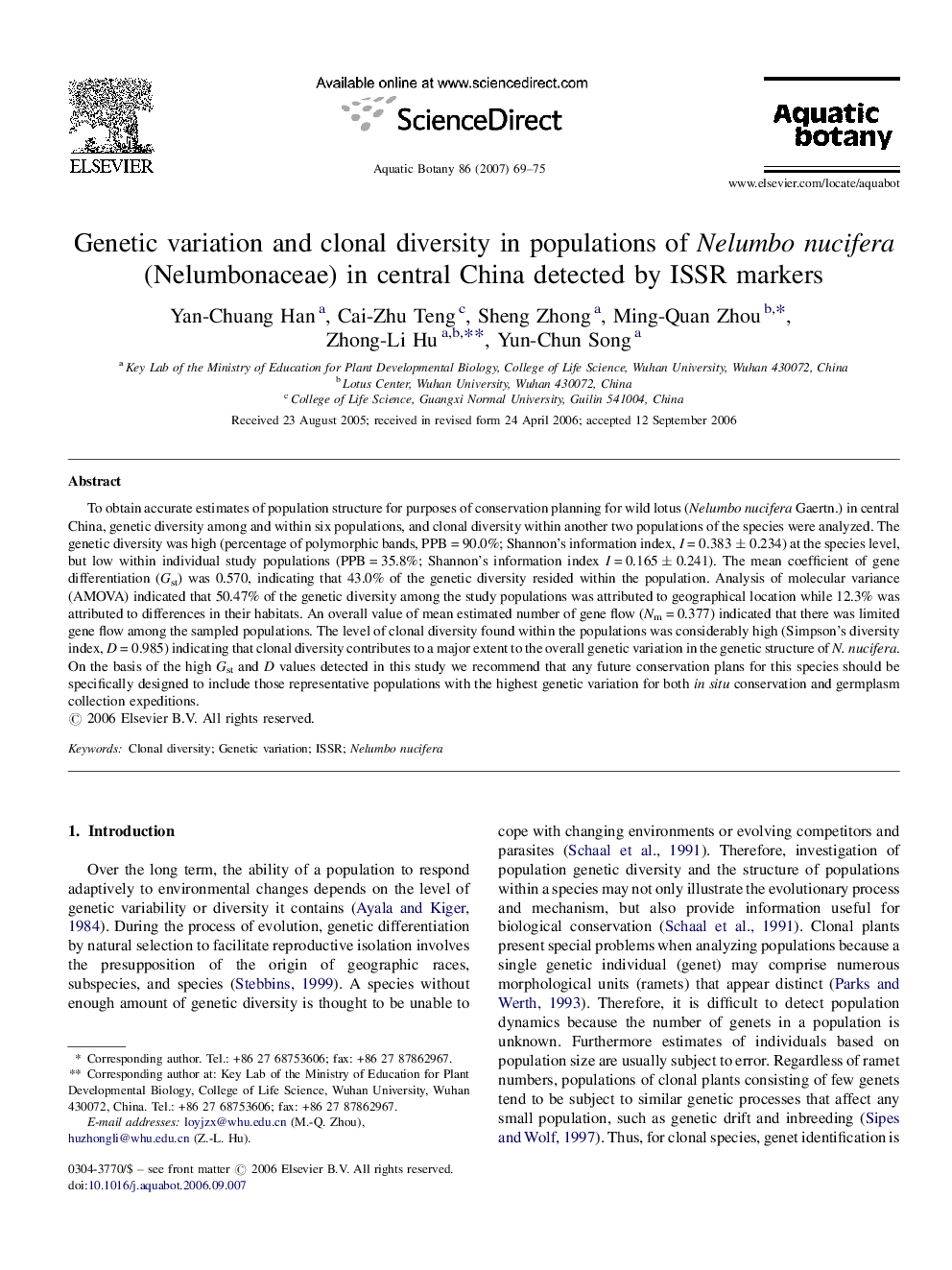| Article ID | Journal | Published Year | Pages | File Type |
|---|---|---|---|---|
| 4528482 | Aquatic Botany | 2007 | 7 Pages |
To obtain accurate estimates of population structure for purposes of conservation planning for wild lotus (Nelumbo nucifera Gaertn.) in central China, genetic diversity among and within six populations, and clonal diversity within another two populations of the species were analyzed. The genetic diversity was high (percentage of polymorphic bands, PPB = 90.0%; Shannon's information index, I = 0.383 ± 0.234) at the species level, but low within individual study populations (PPB = 35.8%; Shannon's information index I = 0.165 ± 0.241). The mean coefficient of gene differentiation (Gst) was 0.570, indicating that 43.0% of the genetic diversity resided within the population. Analysis of molecular variance (AMOVA) indicated that 50.47% of the genetic diversity among the study populations was attributed to geographical location while 12.3% was attributed to differences in their habitats. An overall value of mean estimated number of gene flow (Nm = 0.377) indicated that there was limited gene flow among the sampled populations. The level of clonal diversity found within the populations was considerably high (Simpson's diversity index, D = 0.985) indicating that clonal diversity contributes to a major extent to the overall genetic variation in the genetic structure of N. nucifera. On the basis of the high Gst and D values detected in this study we recommend that any future conservation plans for this species should be specifically designed to include those representative populations with the highest genetic variation for both in situ conservation and germplasm collection expeditions.
